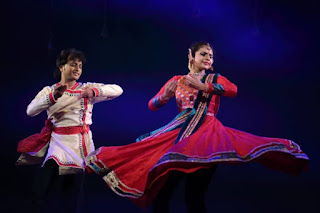The Traditional Dance Forms Of India
India is a country of rich heritage and culture. This is best illustrated by the Indian dance styles. There are many styles to traditional Indian dances. This is because dance forms come from different parts of India - they were originally there and have been adapted to incorporate cultural elements Indian Dance Classes Near Me.
Many folk dances are specific to a particular region of the country. They are mostly performed only by local people. Indian film dances are also a prominent part of the country's culture.
Indian Dance Forms
Indian dance forms have their roots in the Vedic period, when people used to sing and dance for entertainment and recreation. Performer arts are mentioned in the Vedas. All the oldest compilations of ancient dance forms are found in the Hindu text Natya Shastra.
These ancient dance forms are the basis of the Indian classical dances. Let's take a look at the most popular dances in the country.
Bharatanatyam
The Bharatanatyam is a South Indian dance that was created in 1000 BC. It is mostly performed to Carnatic music. The dance was originally performed in Hindu temples or other religious locations. Bharatanatyam was a solo dance performed by women that depicted religious ideas or spiritual themes. This dance form was ridiculed and suppressed during the British era. It went on to be one of the most popular traditional dances in India.
Kathakali
This is Kerala's most popular dance form, which is essentially a dance drama. Kathakali, a 17th century dance form, is performed as a story-play. It features elaborate costumes and makeup as well as masks. Kathakali, unlike other Indian dance forms is performed mostly by men. Kathakali was traditionally performed in temples or religious chambers. These dance moves are based on the South Indian martial arts and ancient athletic traditions.
Kathak
This dance form is North Indian and its name, Kathak, comes from Sanskrit word katha which means "story". Kathak means "the one who tells a story". It primarily consists of childhood and passionate stories about Lord Krishna. Kathak comes in three forms. They are named after, and belong to, three North Indian cities: Jaipur, Banaras, and Lucknow. Ghungroo (small bells), is the main element. It involves rhythmic movements of the body and facial expressions.
Kuchipudi
Kuchipudi is an Andhra Pradesh dance form. Kuchipudi, like other classical Indian dances has its roots. It was developed as a religious performing arts. This dance was performed originally by Brahmin men, but it is now performed by both men and women. This dance is pure and includes expressions as well as sign languages.
Odissi
This dance is from Odisha, a coastal state in Eastern India. Odissi, a traditional dance-drama performing art, is used by women to express religious and spiritual themes. The musicians accompany the dancers, who narrate mythical stories. They also wear symbolic costumes that have rhythmic movements, facial expressions, and gestures.
Manipuri
This dance form, as the name implies, is from North-Eastern India's Manipur. This dance style is based on the Raslila by Radha-Krishna, and features love-inspiring dances. Manipuri is performed as a group. It has a unique costume, Kumil. This is a beautiful skirt that is the shape of a barrel. This graceful dance mainly involves the movements of the upper body.
Mohiniyattam
This Kerala dance form takes its name from Mohini, the seductress avatar for the Hindu God Vishnu. She lured evil demons to make good triumph over bad. Mohiniyattam, a Lasya-style dance that is feminine and features delicate body movements, is called Mohiniyattam. This solo slow dance performance is for women.
These were the most well-known Indian traditional dances. Here's a bit of history. There are many other folk and tribal dances that reflect the importance of Indian culture.



Comments
Post a Comment